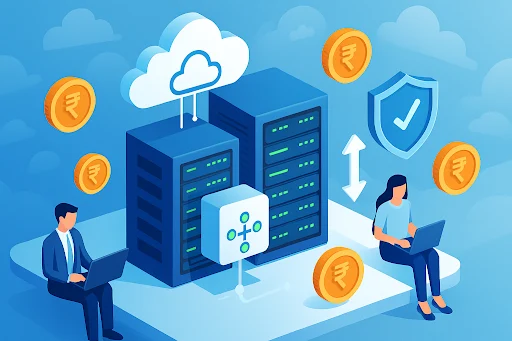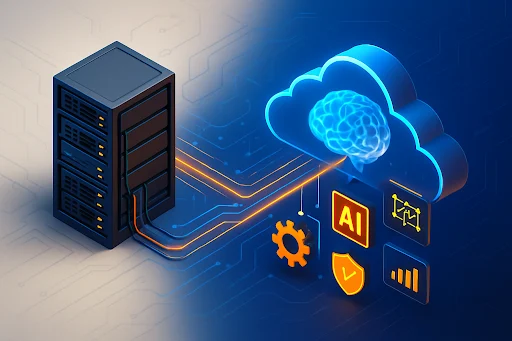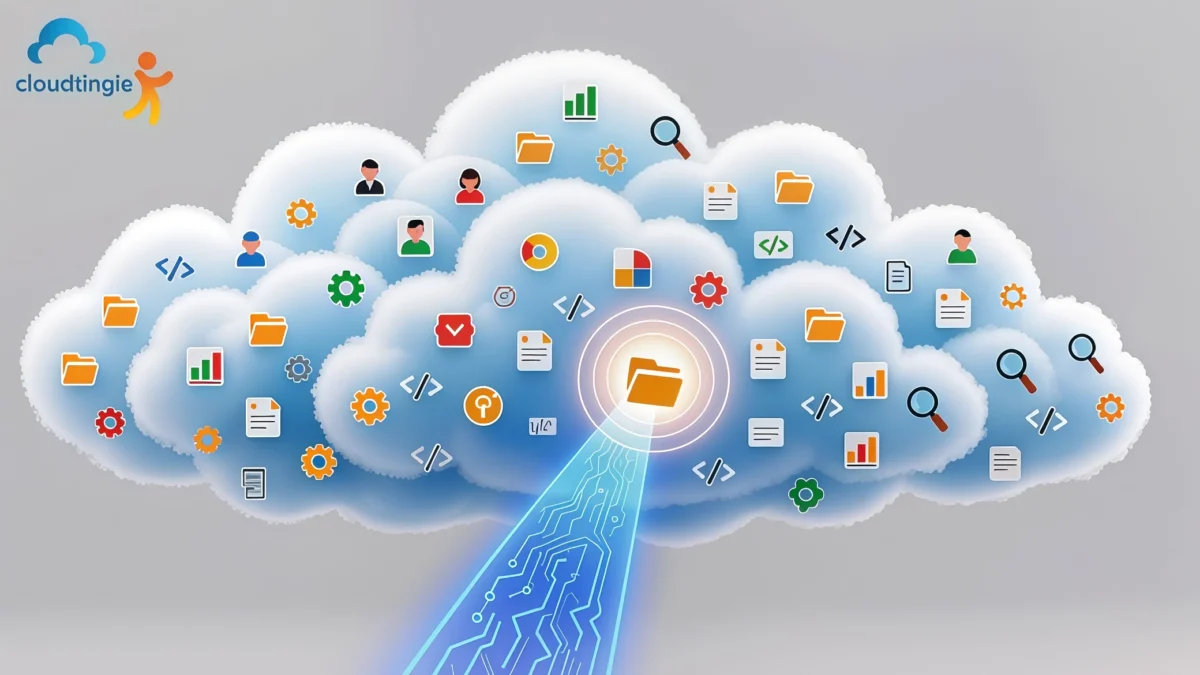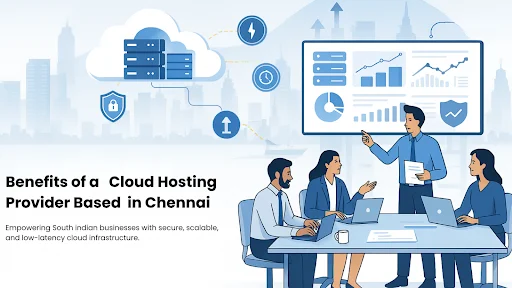The cloud has come a long way since its early days, when it promised to replace big, heavy servers with fast, virtualized computing. What started as a move toward flexible storage and scalable infrastructure has become the basis for digital transformation. In the next ten years, cloud computing will go from a utility to a fabric of intelligence that drives automation, innovation, and global connectivity.
From Virtual Infrastructure to Smart Ecosystems
Initially, cloud adoption was mainly about infrastructure services like data storage, computing power, and networking. Businesses moved to the cloud mostly to cut costs, make IT management easier, and make it easier to grow.
As businesses grew, they wanted Cloud Hosting Providers that offered integrated platforms, developer tools, and managed application environments. This foundation is now giving way to something bigger: a shift from simple infrastructure to cognitive ecosystems where AI, machine learning, and data analytics are built into the cloud layer.
The cloud will host workloads in the next ten years and understand them. Bright clouds will suggest ways to improve things, guess what might go wrong, and handle complicated tasks independently.
Making advanced technology available to everyone
Before, you needed special hardware and expensive licenses to use technologies like AI, deep learning, or blockchain. The cloud changes this by making advanced tools available to everyone. Pay-as-you-go models enable even small startups to use computing power that was once only available to big companies.
A cloud hosting company that combines pre-built AI models and APIs allows businesses to use predictive analytics, natural language processing, or computer vision without putting together complicated stacks. This democratization ensures that innovation is no longer a privilege but a basic expectation in all fields.
The chance for businesses in emerging markets, like Cloud Hosting In India, is especially life-changing. Without spending a lot of money on infrastructure, local businesses can jump over technological gaps, speed up the adoption of digital technology, and compete globally.
Cloud as a Way to Get Information
In the future, the cloud will be a place to store data and a way for intelligence to flow. This change will be marked by several significant changes:
AI Built-In Cloud-native AI will let apps learn all the time. Fraud detection, supply chain forecasting, and real-time personalization are just a few business processes that will happen independently.
Architectures Based on Data
Real-time processing of vast amounts of structured and unstructured data will make it possible to make decisions based on predictions rather than reactions.
AIOps will make infrastructure management self-healing. AI-powered engines will find and fix problems, changes in capacity, or cyberthreats without any help from people.
Interoperability between clouds
The time when vendors could lock you in will end. Smart orchestration layers will let businesses run workloads across many clouds without problems, choosing the best platform based on cost, performance, or compliance needs.
Cloud Hosting in India: A Smart Move
India is one of the fastest-growing digital services markets. This is because more people are using mobile phones, businesses are going digital first, and the government is pushing for digitalization. In this situation, cloud hosting India is no longer a backup plan; it’s a key part of the growth strategy.

Local data centers give end users quick access to data, make it easier for businesses to follow data residency rules, and have pricing that works for companies in the area. Also, the growing number of tier-3 and tier-4 facilities in India ensures that the service is reliable and available at an enterprise level.
The Indian cloud ecosystem is ready to power everything from smart cities to platforms that help people access money when combined with AI-driven intelligence. In this area, a cloud hosting provider is not just a service provider but also a key partner in the country’s digital transformation.
Sustainability as a Motivator
The next ten years of cloud will be linked to the sustainability agenda. Cooling systems that use less energy, data centers that run on renewable energy, and footprints that don’t add to carbon emissions will all become industry standards. Every cloud hosting provider must be open about its sustainability reporting.
Green cloud adoption will help the environment and save money because new ways of cooling and managing energy make operations more efficient.
Intelligence is everywhere when edge meets cloud.
The rise of IoT devices, 5G networks, and real-time apps is pushing intelligence to the limit. With a central cloud, the old way of doing things will still work alongside smaller, distributed micro-clouds closer to users.
Edge computing and cloud intelligence will be necessary for healthcare diagnostics, self-driving cars, and industrial automation. The central cloud will improve insights and aggregated intelligence, while data will be processed locally for speed.
This hybrid approach benefits markets like cloud hosting in India by allowing for local processing of workloads that need low latency while keeping centralized governance and scalability.
Security and Compliance: Going from Reactive to Predictive
Cloud security is changing from a shield that reacts to threats to a guardian that sees them coming. AI-based threat detection, behavioral analytics, and zero-trust frameworks will shape secure architectures.
Regulatory standards will be built into the service fabric of a cloud hosting provider, making compliance automatic. Companies will get real-time compliance dashboards instead of long audits. These dashboards will ensure they follow GDPR, HIPAA, or PCI DSS rules.
Cloud Platforms for Specific Industries
Cloud solutions that are not specific to an industry will be replaced by clouds designed for particular industries. Healthcare clouds that follow HIPAA rules, fintech clouds that are best for high-frequency trading, and learning clouds that focus on education will be the most popular.
This trend lets providers offer infrastructure and curated ecosystems with built-in compliance, data models, and application templates. For cloud hosting in India, specialized cloud stacks can be very useful for businesses like e-commerce, digital banking, and telemedicine.
Intelligence Outside the Business
In the next ten years, the cloud will reach beyond business IT. Smart cities will use cloud-based platforms to manage traffic, save energy, and provide services to citizens. Governments will use sovereign clouds to protect their citizens’ data and give them access to digital services that can grow with them.
The combination of cloud hosting and AI intelligence will affect education, healthcare access, and climate monitoring at the level of society. The cloud is no longer just a tool for businesses; it is now a part of society’s infrastructure.
The Way Forward
The cloud’s path is clear: it will go from static infrastructure to dynamic intelligence. Over the next ten years, businesses will want their cloud hosting provider to do more than provide computing power. They will also want them to provide insights, automation, and resilience.
Cloud hosting is popular with businesses. India will be the first country to adopt this bright cloud fabric globally thanks to its cost-consciousness, huge digital demand, and strong local ecosystem.
As cloud platforms change, those who embrace openness, sustainability, and built-in intelligence will come out on top. The cloud won’t be an invisible utility anymore; it will be a partner, a strategic advisor, and a way to make new ideas happen faster.
Last Word
The next ten years of cloud computing will be less about servers and more about intelligence. It’s about going from infrastructure to intelligence, where every workload, dataset, and application has some intelligence built into it. The cloud is no longer a background service; it is now the nervous system of the digital world.






